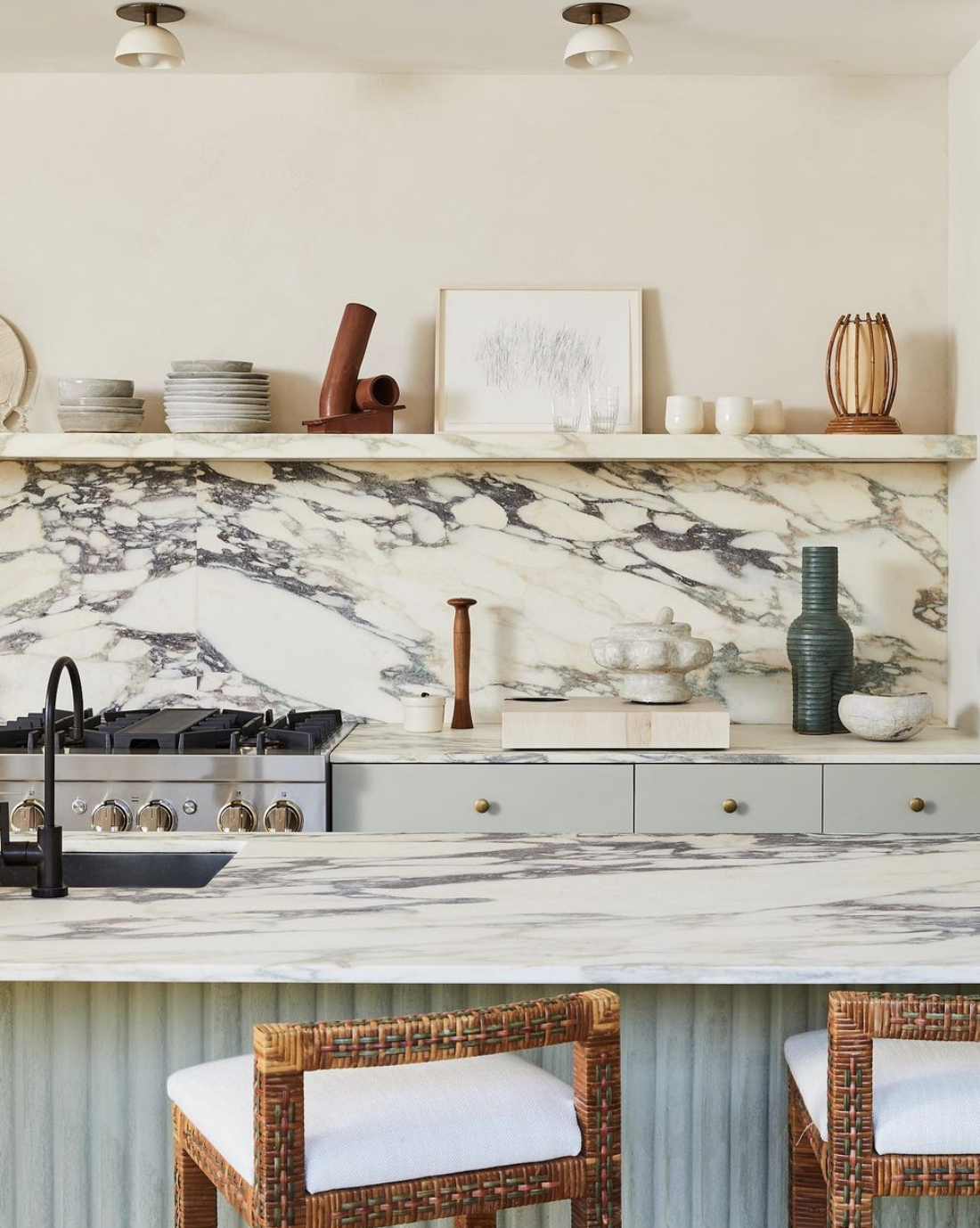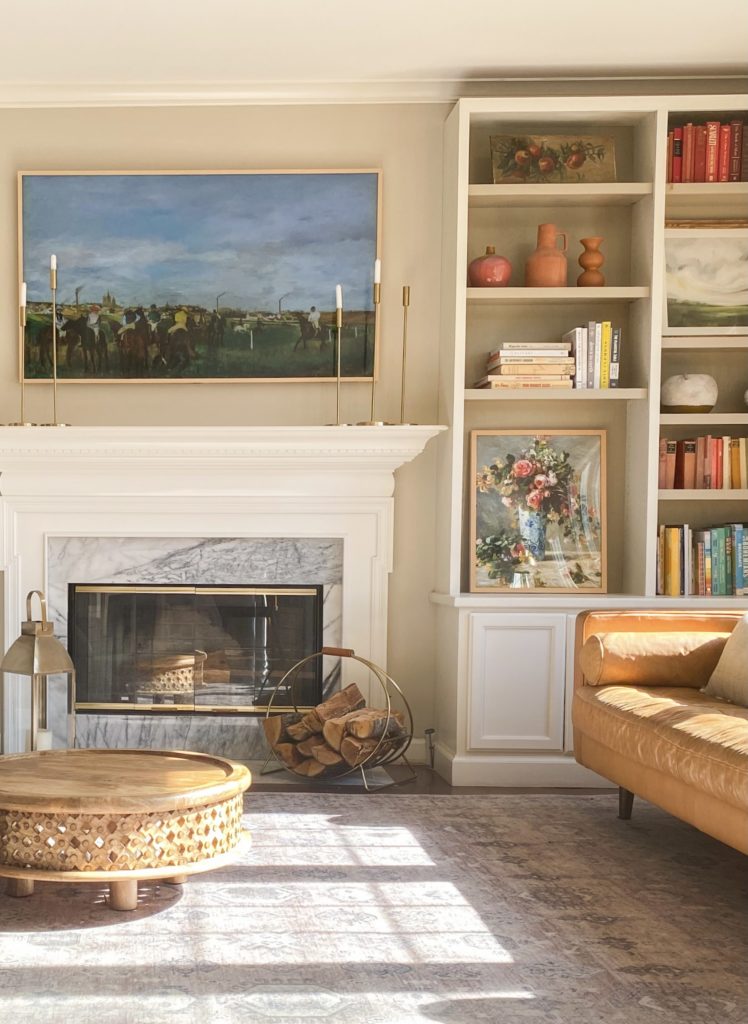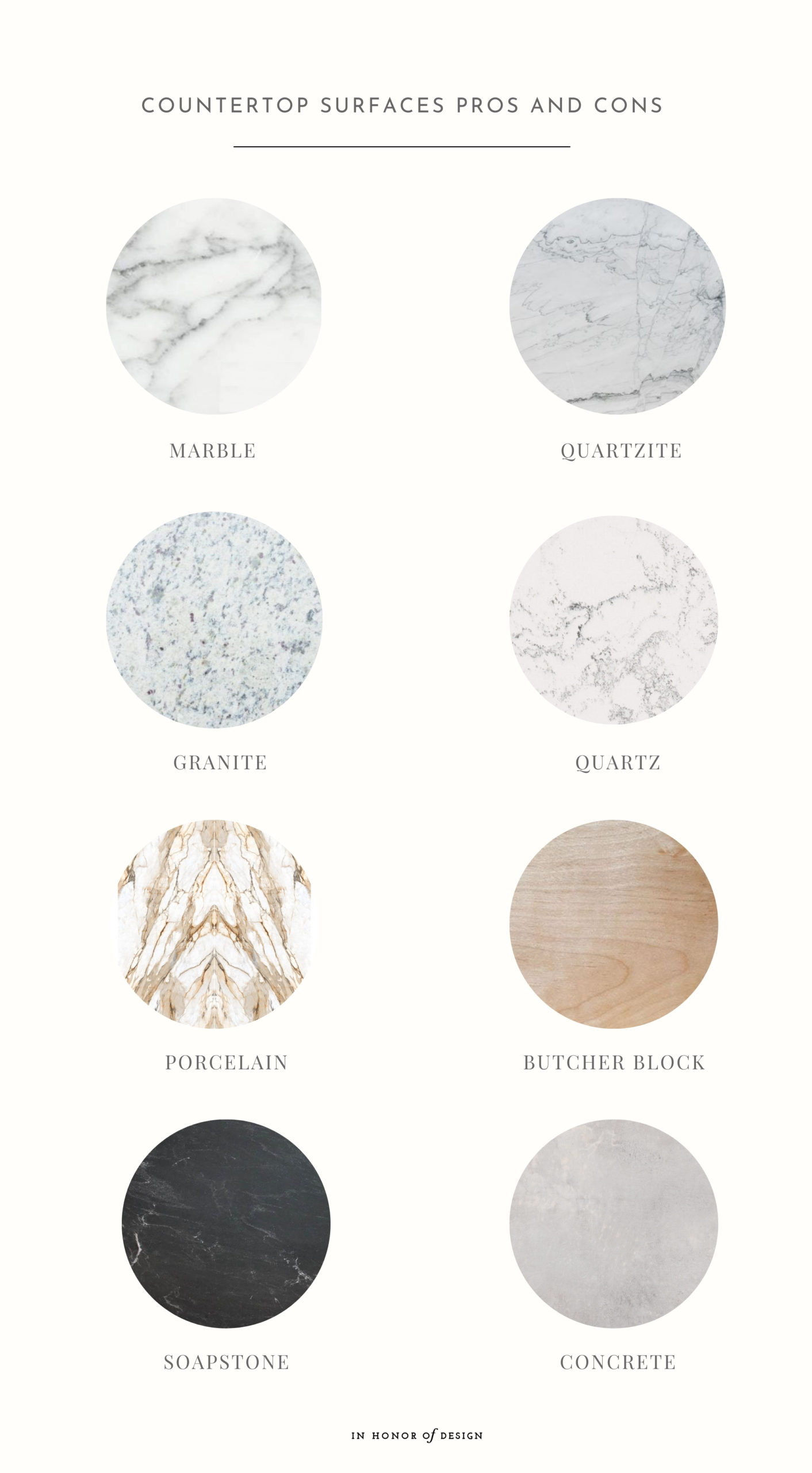
Picking back up our kitchen series this week as we have had to make some big decisions for our remodel! Today we are taking a deep dive into types of kitchen countertop surface materials. We are breaking down the pros and cons as well as price differences to consider.
We spend a lot of time in our kitchen prepping or cooking meals for our big fam. (Lord knows I need all of the motivation I can get to get in there come 5pm!) My goal is I know there will be many hours spent here in years to come, so I wasn’t about to make a speedy choice on countertops! I researched a bunch of options to weigh pros, cons, and price points before visiting some local slab yards. Below is the run down!
*Note: Costs will vary depending on the type of slab so these are based on averages including fabrication costs.
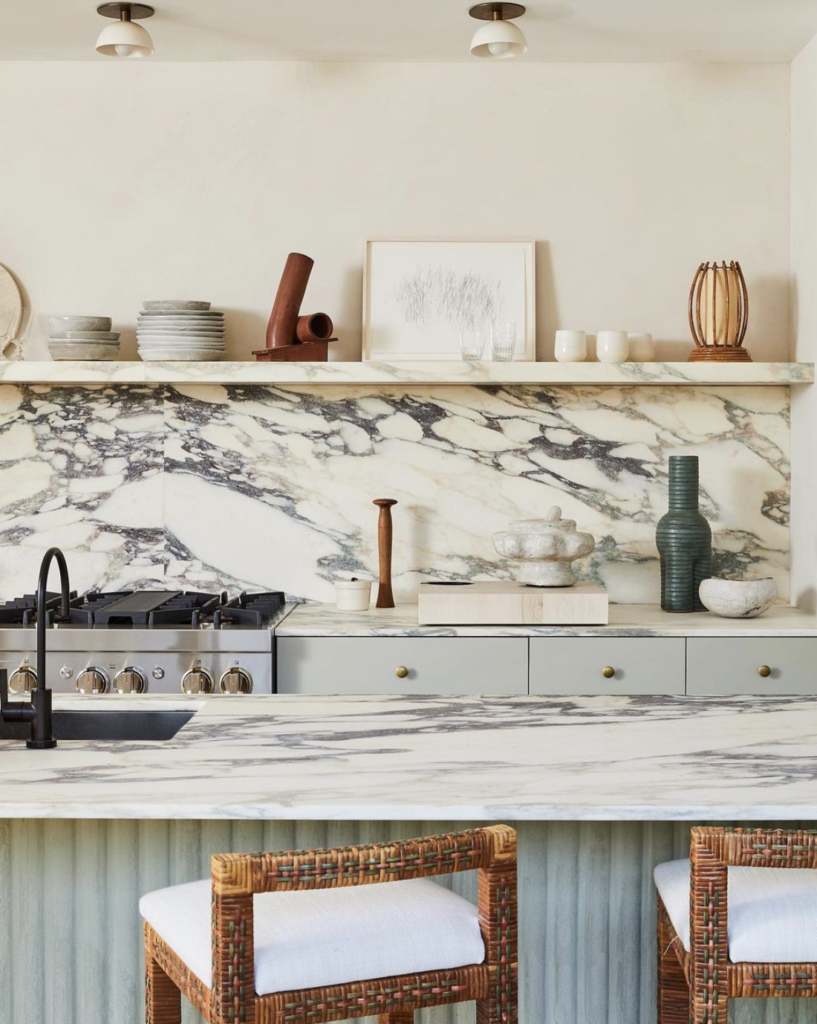
(via Eye Swoon)
Marble
Pros: A natural stone that varies in colors and designs. No two slabs are the same offering a unique design to any space. It patinas over time. The color darkens slightly and the wear looks more organic (not all people like this however). Heat resistant, so it can handle hot pans and sheets. Easy to clean. Since it is also a desirable stone, it can add to your home value due to the desirability.
Cons: Depending on the type of marble it can be more porous, which means that it can easily absorb drips, spills, and pigment from things like acids, wine, or juice if it sits too long on the surface. Time and wear can cause it to etch or scratch if not sealed every year.
Cost: $$ – $$$
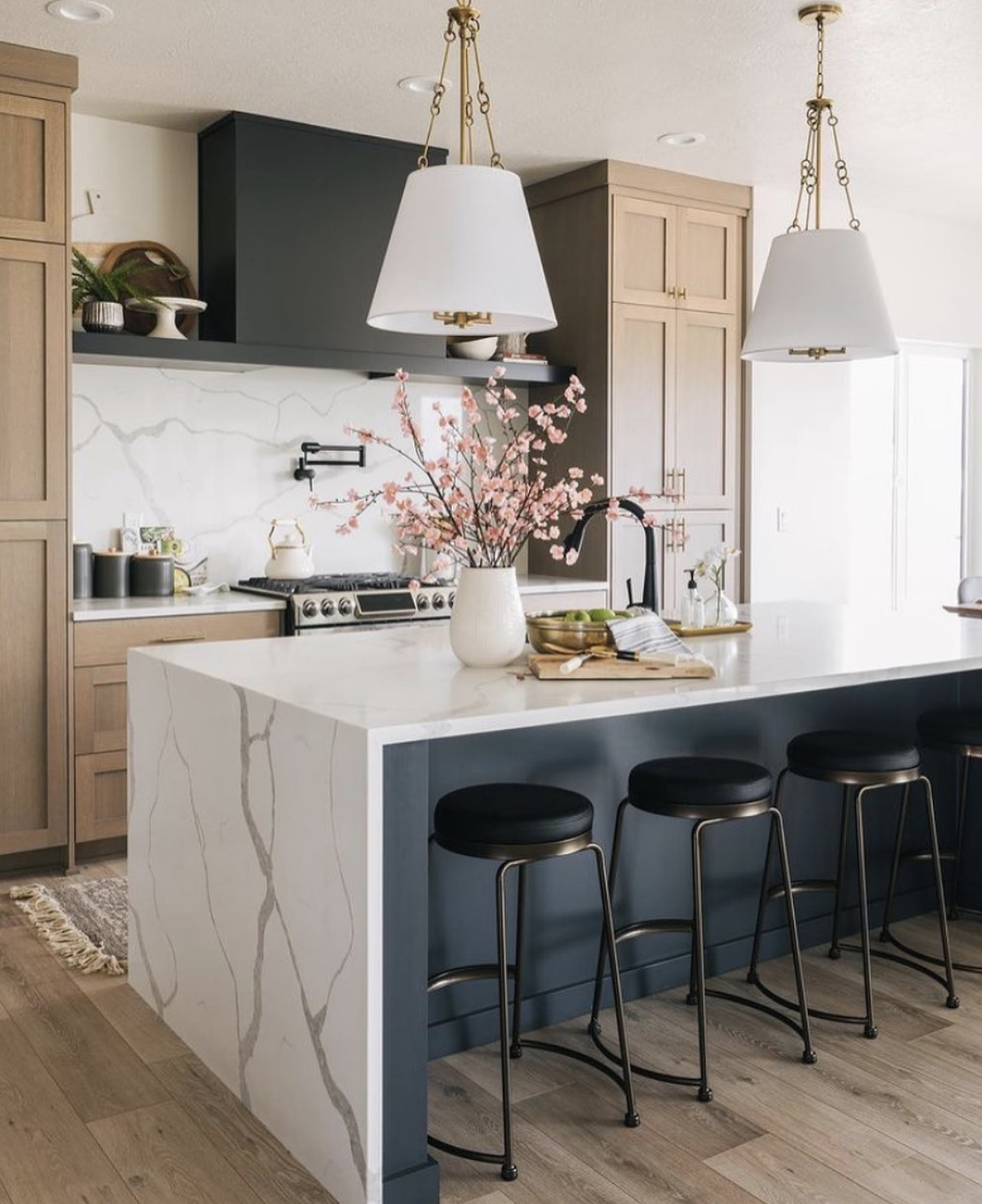
(via Andrea West Design)
Quartz
Pros: Since it is a manufactured stone it is non porous, and does not need sealing. This means it is low maintenance, and easy to clean. It’s durable, stain, and heat resistant. There are many variations in design, and it can mimic the look of granite or marble and add to your home value. Due to it’s durability it often comes with a lifetime or 25 year warranty.
Cons: It can be high in price. Can chip if heavy objects fall heavily on the surface or edges, and the polymer and resin fillers are susceptible to heat damage.
Cost: $$$
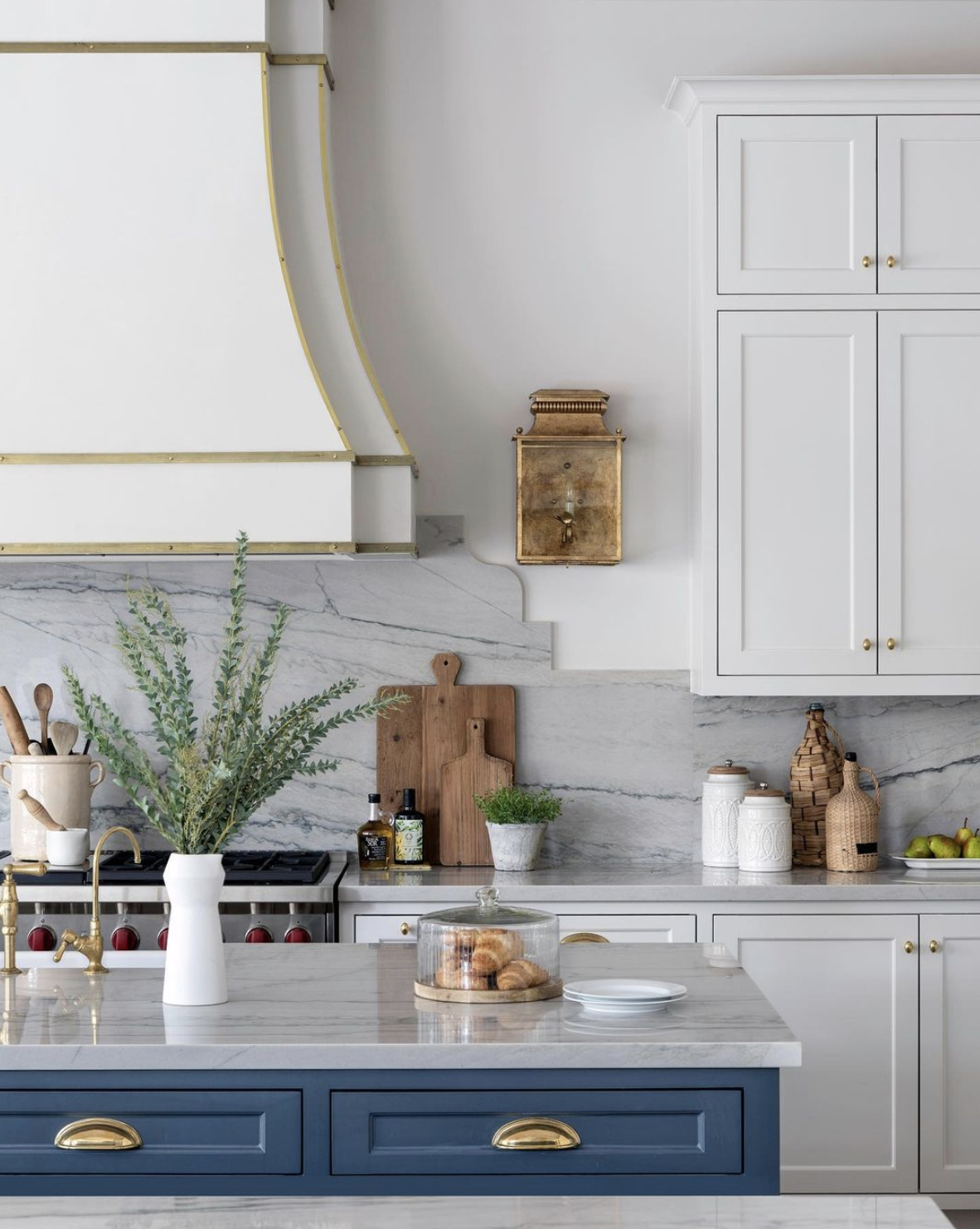
(via Elizabeth Garrett Designs)
Quartzite
Pros: A natural metamorphic rock formed from sandstone, quartzite has unique natural patterns. Very durable. Easy to clean and resistant to heat.
Cons: Porous and can be susceptible to stains if not sealed. Can be higher in cost. (Ranging from $100-$200 per square foot.) It is also more limited in color options as it only ranges from light grey to white.
Cost: $$$
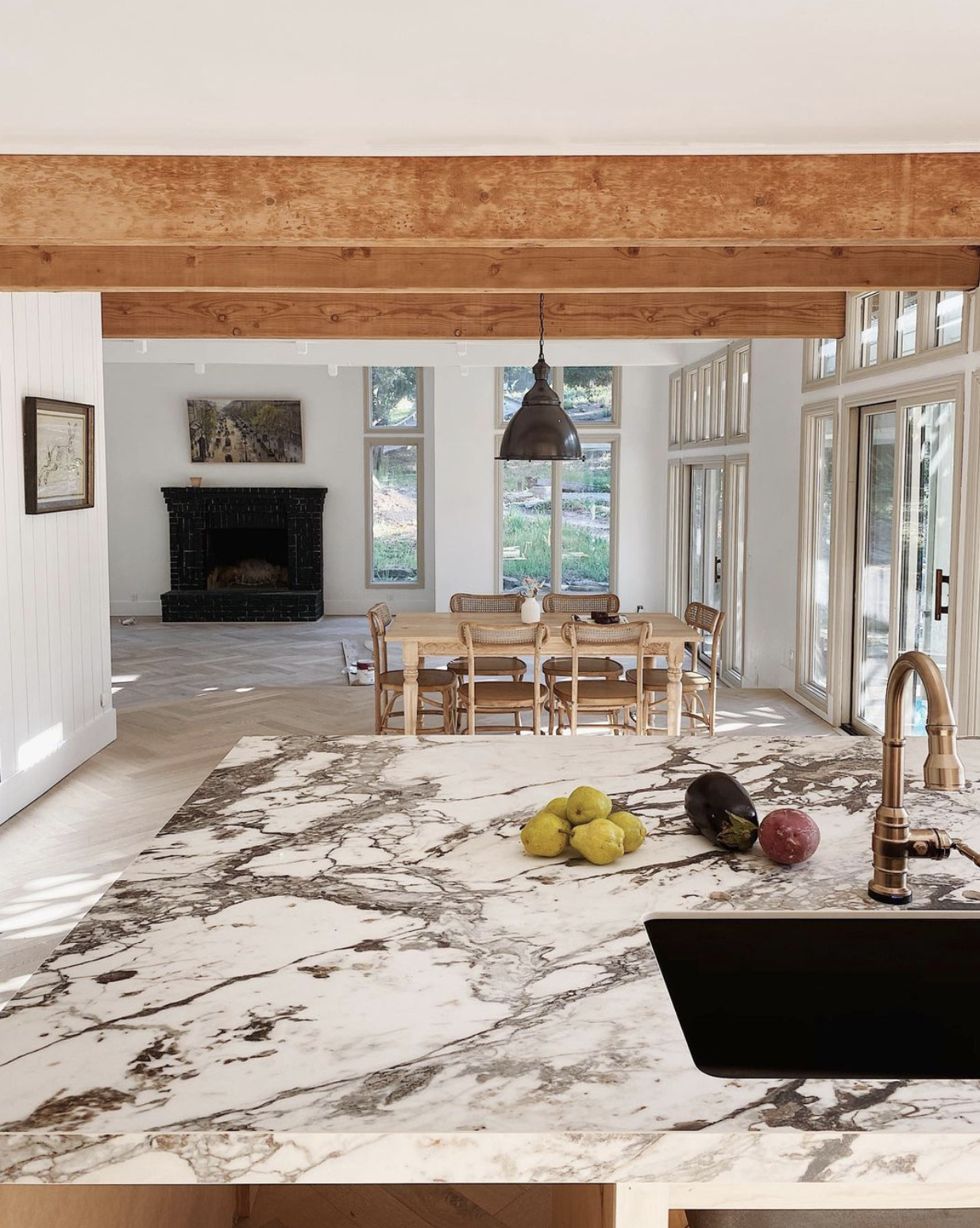
(via Arrows and Bow)
Porcelain
Pros: A strong and durable ceramic made of dense and durable clay. Resistant to stains. Non porous and hygienic. Fabricators can add color effects through pigmented glazes which brings unique colors and patterns to a porcelain slab. (Finishes are glazed or unglazed for matte or shiny look.) Heat and scratch resistant.
Cons: The biggest drawback is that the design is not integrated throughout the slab. Fabricators print the designs on the top of the countertop slab, so the pattern doesn’t carry throughout rounded edging. It is also difficult to fabricate without chipping occurring which tends to push the price up.
Cost: $$$
Granite
Pros: A natural stone that comes in a wide range of patterns and designs. Every slab is unique. It is a very hard substance so it is heat and scratch resistant. (It can take the heat of hot pans!) It also is a desirable kitchen surface so can help home value.
Cons: Granite is porous so if not properly sealed it can absorb liquids and stain. (A poorly-sealed countertop can also harbor bacteria in its pores.) Higher cost. (Average of $100 – $250 per square foot.)
Cost: $$-$$$
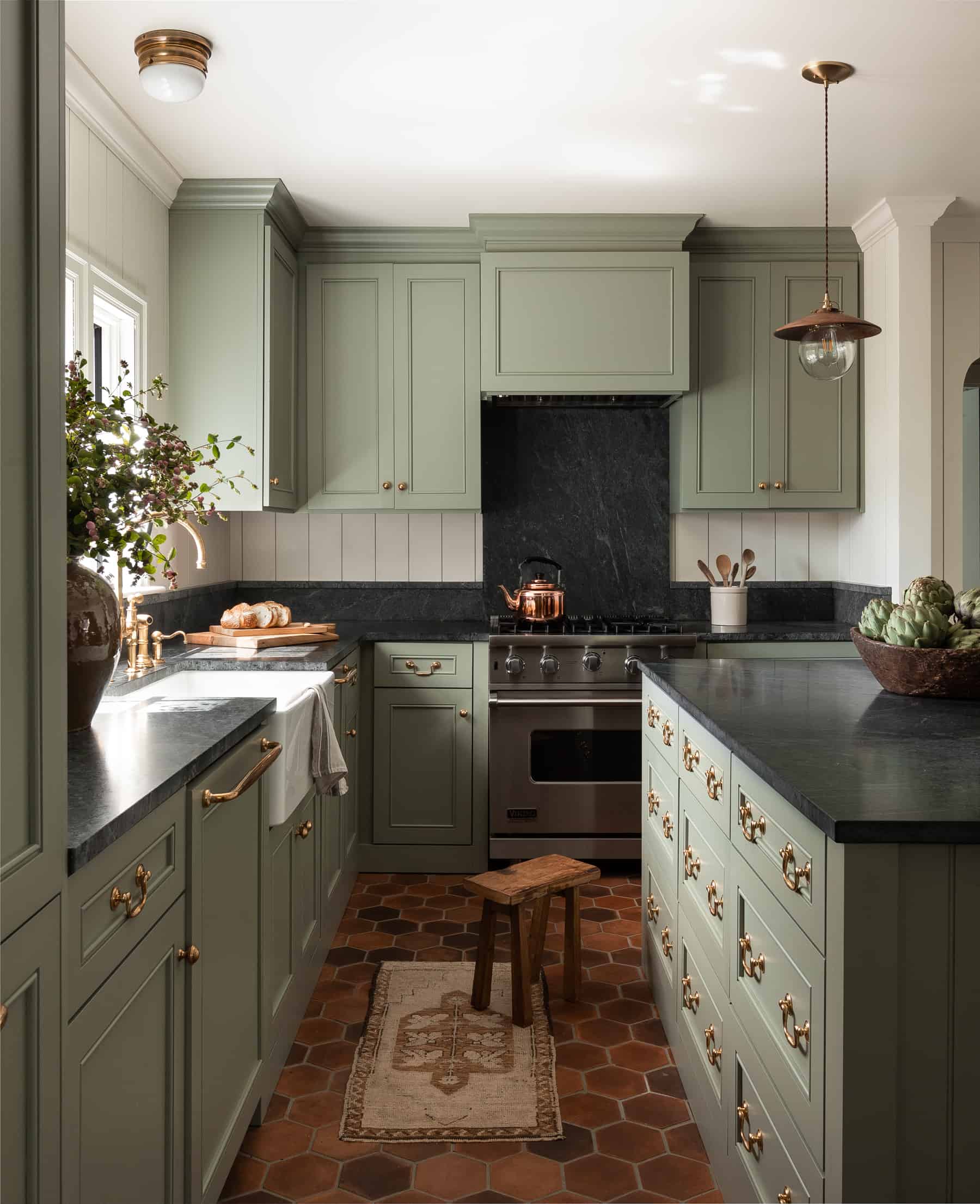
(via Heidi Callier Design)
Soapstone
Pros: One of the upper hands of soapstone is that it is nonporous so it is stain and heat resistant, and doesn’t require the sealing most stone surfaces do. Can add to your home value.
Cons: Limited color and style options. Requires regular sealing like other stone surfaces. It is a softer stone, so it can scratch and wear over time. (However again, some love the worn patina look!)
Cost: $$
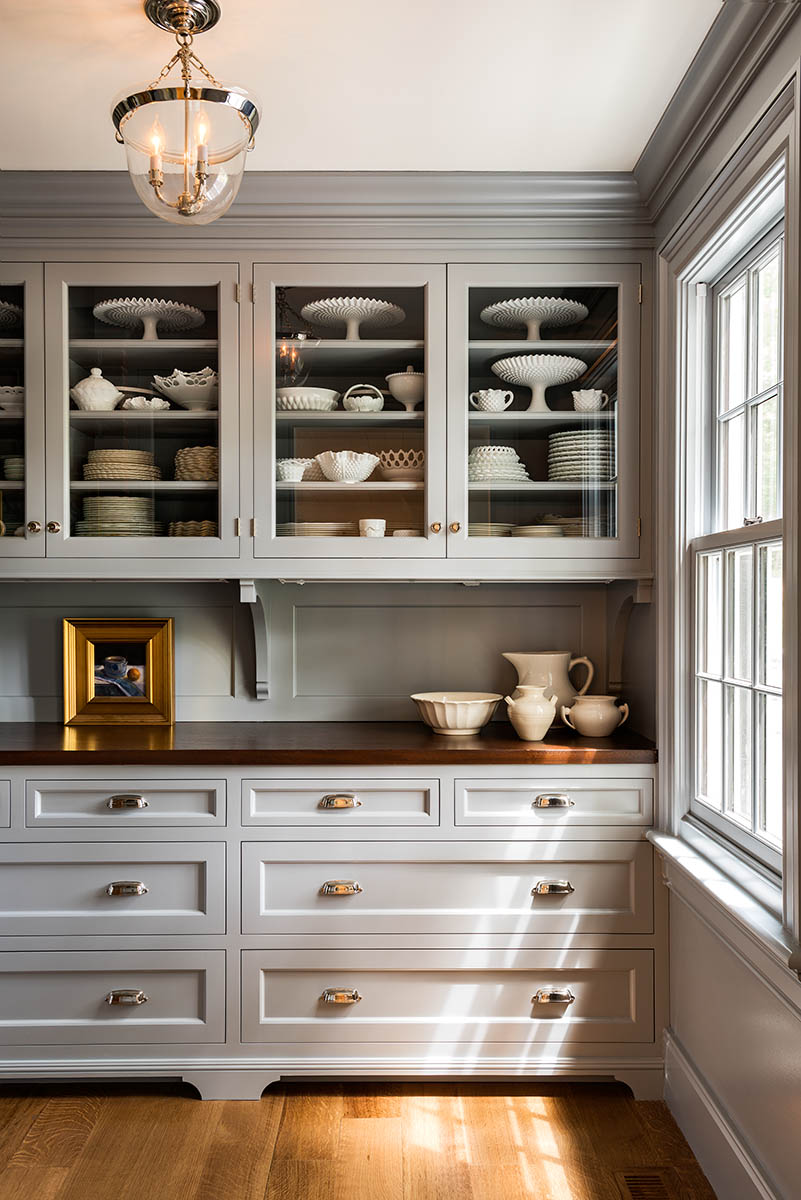
(via Morisseypol Designs)
Wood/Butcher Block
Pros: Pairs well with all design styles. Functional for cooking as you can cut directly on the surface. Easier to install than stone surfaces. A more cost effective option.
Cons: Very porous so requires proper sealing to prevent water damage, wear, and bacteria. Since it is a soft surface it is more easily damaged with dents and scratches.
Cost: $

(via French Fancy)
Concrete
Pros: Since concrete is extremely hard and tough is very heat resistant and will not scratch. Installers can achieve a smooth, seamless surface. Easy to clean. You can use varying pigments or stains to achieve the color concrete you want.
Cons: Needs to be re-sealed every 1-3 years as it is a porous material and susceptible to stains. Hairline cracks occur in nearly all concrete countertops, and it tends to be pricey to purchase and install properly.
Cost: $$$

(via The Wood Grain Cottage)
Laminate
Pros: One of the most budget friendly options. Since laminate is synthetically manufactured, it comes in many different styles and colors that can mimic all kinds of stone. Very low maintenance and easy to clean. Since it’s a lighter material it is easier to install which is another cost saver.
Cons: Since it is a plastic based surface it is prone to cuts, scratches, and is only mildly heat resistant. Doesn’t have the long term durability compared to stone surfaces.
Cost: $
Types of finishes:
Honed – Matte with a slight sheen
Polished – Shiny and smooth
Leathered – Matte a textured finish
Places to browse online:
Caesarstone
Bedrosians
Cambria
Daltile
Most of these places offer samples for purchase as well.
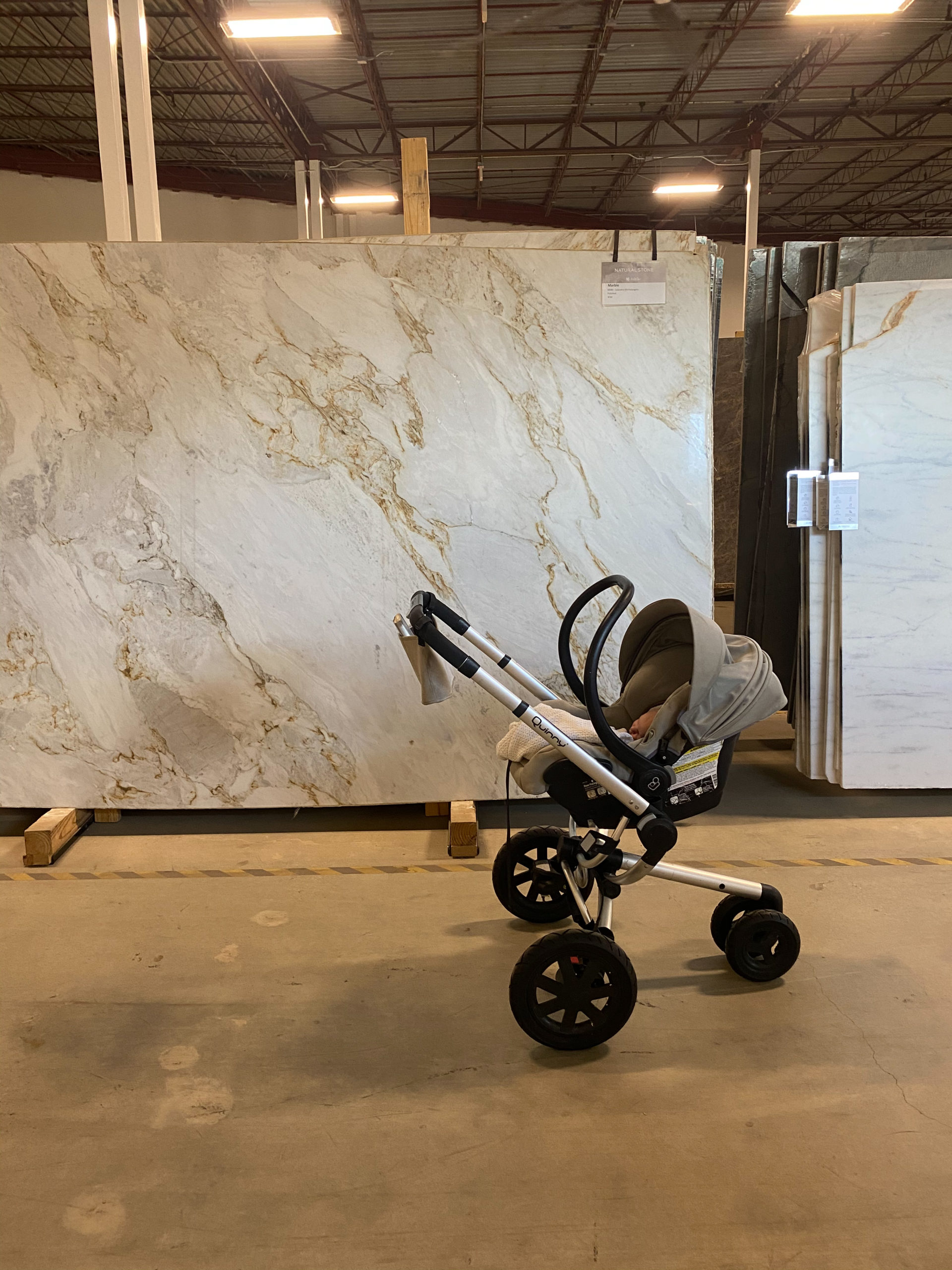
(Michelangelo calacatta marble – my favorite selection that ended up being THE most expensive of course.)
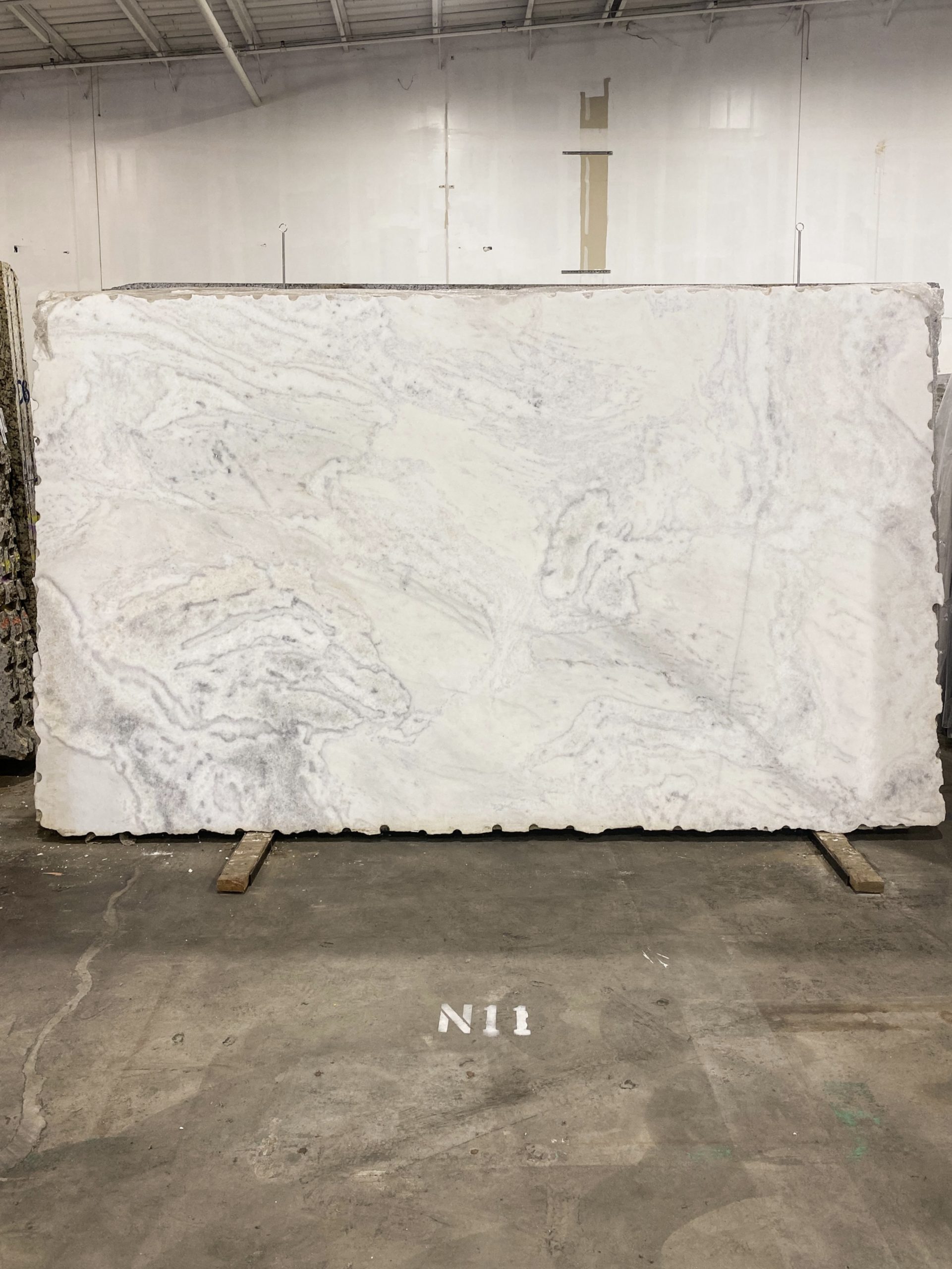
(Our final choice is this honed marble!)
What we decided on:
Marble it is! I was first under the impression that marble was the priciest material and would be out of our budget range. I am most drawn to the natural beauty of marble and how each slab is a unique piece of the earth. I was shocked to see my favorite slabs were actually lower on the cost list than quarts, quartzite, and granite! This does mean more maintenance however, and every slab yard employee will discourage you from buying if you have small children. HOWEVER! After polling the IHOD audience for real lived in experiences, soooo many of you said you actually haven’t had much problems with your marble countertops if sealed properly. I think it gets a bad rap due to the etching and scratching that can occur, but I personally love the patina look. (If you like super smooth and clean, quartz may be your best bet.) After looking at numerous options we found a honed marble slab that would fit our space and overall design really well. It will be a key element in our kitchen, so I love how it has a warmer overall feel than most slabs we looked at.
As we get down to the wire before the renovation begins, I will be sharing final renderings and plans so you can follow along in our IHOD weekly email!
What has been your countertop experiences? Which surfaces have worked for you?

